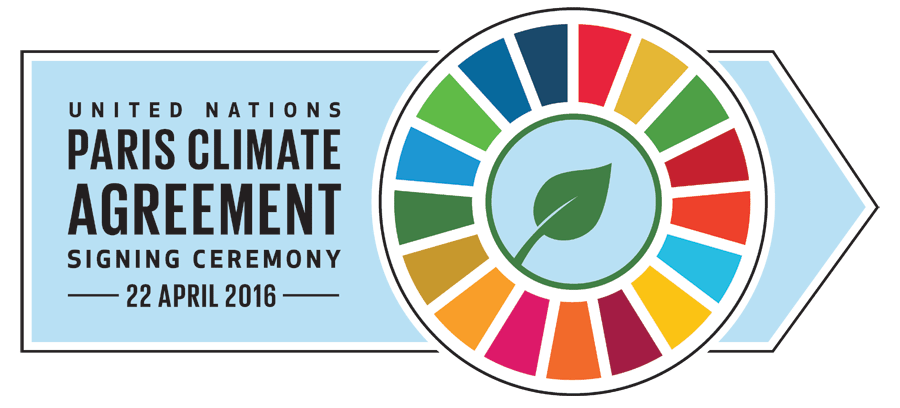US President Donald
Trump sent shock waves through the international community this week
after rumours swirled that he would back out of a global agreement to
tackle climate change.
The Paris Agreement was hailed as a landmark international deal when 194 countries, including the EU and China, signed up to sweeping pledges on the environment at a UN meeting in the French capital in late 2015.
The US is the second biggest polluter behind China and its potential exit has raised questions over whether the goals set by the Paris Agreement can still be met.
But what exactly does the agreement entail?
Limit global warming to 'well below' 2°C, or 1.5°C if possible
The agreement aims to limit the increase in global average temperatures to “well below 2°C above pre-industrial levels” – the level beyond which scientists say we will see the worst extremes of global warming.
It also aims to “pursue efforts to limit the temperature increase to 1.5°C above pre-industrial levels, recognizing that this would significantly reduce the risks and impacts of climate change”.
In order to actually limit warming to that level, the aim is to “achieve a balance between anthropogenic emissions by sources and removals by sinks of greenhouse gases in the second half of this century” – in other words, net carbon emissions to be zero.
To get there, countries should aim to “reach global peaking of greenhouse gas emissions as soon as possible, recognizing that peaking will take longer for developing country parties, and to undertake rapid reductions thereafter in accordance with best available science”.
Cut greenhouse gas emissions in the 2020s
Ahead of (and even during) the Paris summit, countries made so-called "Intended Nationally Determined Contributions" (INDCs) – voluntary pledges setting out how they plan to limit their greenhouse gas emissions during the 2020s.
Some 158 submissions covering 185 countries (the European Union submits one pledge covering all its member states) and covering more than 90pc of global emissions were made. These were not up for negotiation during the talks.
The proposed deal commits countries to “pursue domestic mitigation measures with the aim of achieving the objectives”.
However, the targets themselves are not legally binding and a country will not be penalised if it fails to meet them.
The INDCs formally became Nationally Determined Contributions at the time each country ratified the Paris Agreement.
A pledge for deeper emissions cuts in future
The emissions cuts pledges made so far still leave the world on track for at least 2.7°C warming this century. A key part of the deal is therefore the mechanism designed to make countries pledge deeper emissions cuts in future.
The non-binding decision text asks countries to come back before 2020 and to revisit the pledges they have made, and to then make new pledges every five years thereafter.
The binding deal – covering the period after 2020 – also commits countries to “communicate a nationally determined contribution every five years”.
Each country’s pledge must “represent a progression” on their previous one “and reflect its highest possible ambition”
Rich nations to provide funding to poorer ones
The agreement requires that “developed” nations – as defined by the UN Framework in 1992 - will continue to help developing countries with the costs of going green, and the costs of coping with the effects of climate change.
The thorny question of how much money rich nations must give only appears in a non-legally binding 'decision text' accompanying the Paris Agreement.
Currently, developed countries are obliged to 'mobilise' $100bn a year of public and private finance to help developing countries by 2020 – a target set in Copenhagen in 2009.
The Paris decision says they "intend to continue their existing collective mobilization goal through 2025" - in other words continue the $100bn a year, and then by 2025 set a new goal "from a floor of $100bn".
Finance was one of the biggest rows of the talks, with developing nations demanding more cash (and arguing that developed nations haven’t even met their $100bn pledge). Although many poorer countries wanted increased finance to be a legally binding requirement, the US made it clear it would never ratify such a deal.
Developed nations meanwhile argued for an end to the crude 1992 definition – which sees six of the 10 wealthiest counties in the world classed as “developing” and under no obligation to contribute financially.
They were pushing for a wording suggesting other countries “in a position to do so” should also contribute (especially as some, such as China, already are in practice). But developing nations resisted this wording and in the final agreement there is a much weaker commitment that non-developed nations are “encouraged to provide or continue to provide such support voluntarily”.
Holding countries to account
There is to be a global “stock-take” in 2023, and every five years thereafter, to assess progress toward the aims of the agreement and to encourage countries to make deeper pledges (see point 3).
The text sets out plans for a new transparency framework to see whether countries are actually carrying out their pledges, in order to hold them account and inform the stocktake.
Countries will have to disclose an inventory of their emissions and information to track their progress in hitting their national target, while developed countries should also give information on the finance they are providing or mobilising.
This will be subject to a “technical expert review” to check their progress and highlight areas where improvement is needed.
However, the whole transparency framework will have “built-in flexibility” offering leeway to developing countries “that need it in the light of their capacities”.
Pulled from telegraph.co.uk

No comments:
Post a Comment